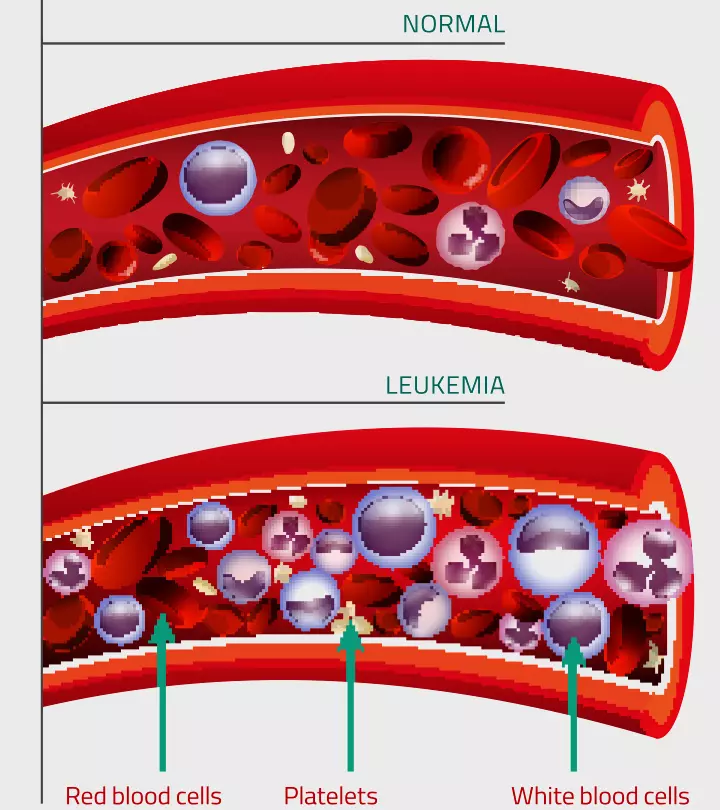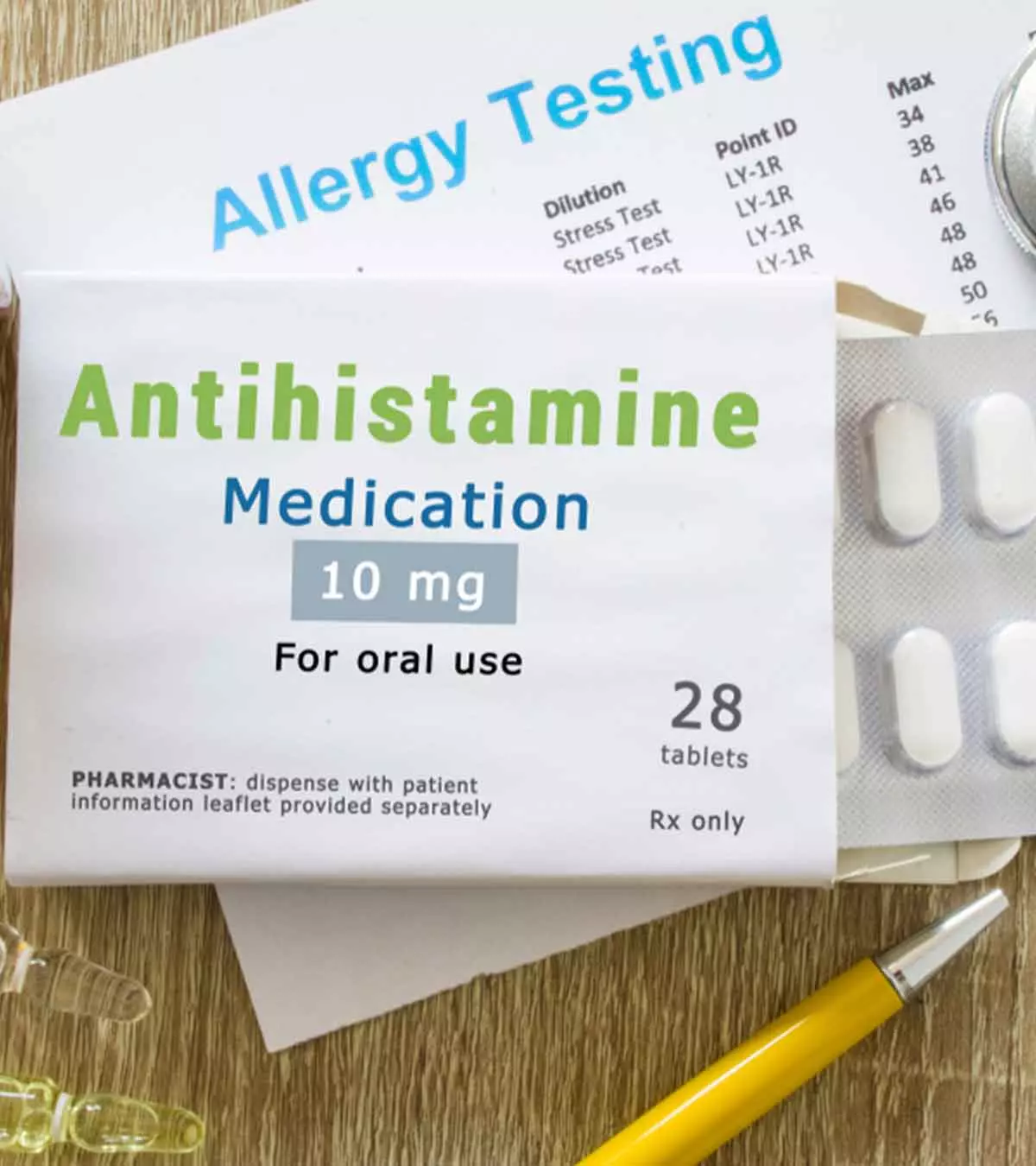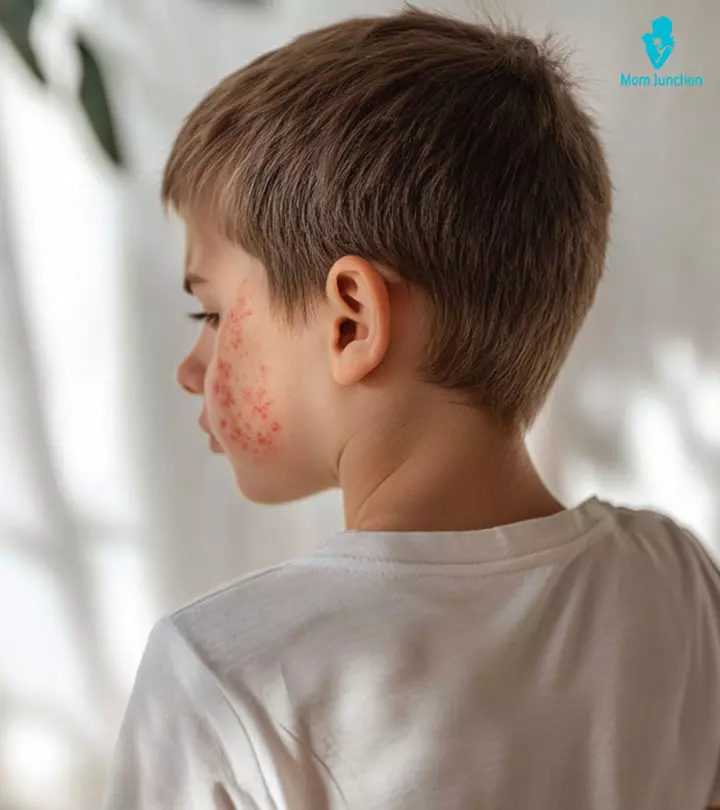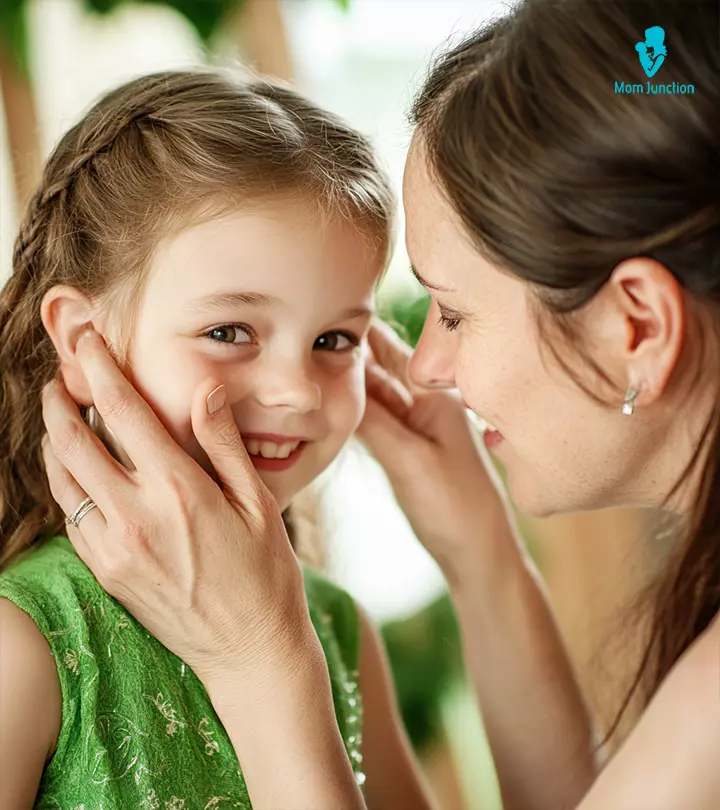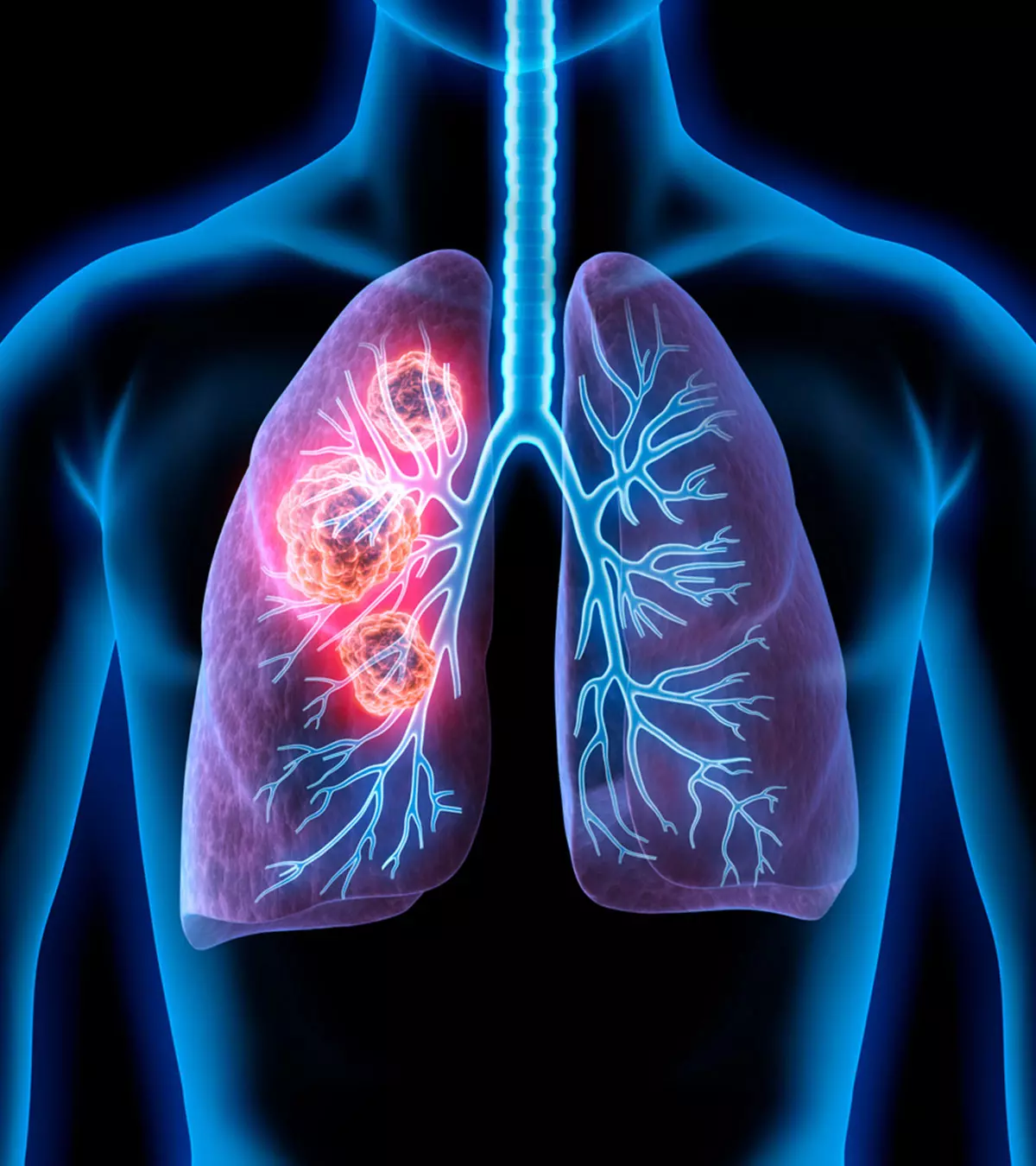
Image: ShutterStock
Pediatric limping is most often caused by physical injuries. However, prolonged limping without a physical injury may be a cause for concern. The causes of a child limping could range from a minor injury to an underlying medical condition. If limping in children is associated with pain, it should not be dismissed as growing pain since such pains never cause limping.
Ice application, rest, or physical therapy can help manage limping caused by a physical injury. However, consult your child’s pediatrician if your child starts limping for no apparent reason.
Read this post to know more about the causes, symptoms, diagnosis, and treatment of limping in children.
Key Pointers
- Limping in children may be caused by an external injury, nerve problems, bone infections, arthritis, or other underlying issues.
- Numbness, hip pain, frequent falls, and other symptoms may accompany limping.
- Doctors may suggest cold compress, movement restriction, or physiotherapy for sprain and injury-related limping.
Symptoms Of Limping In A Child
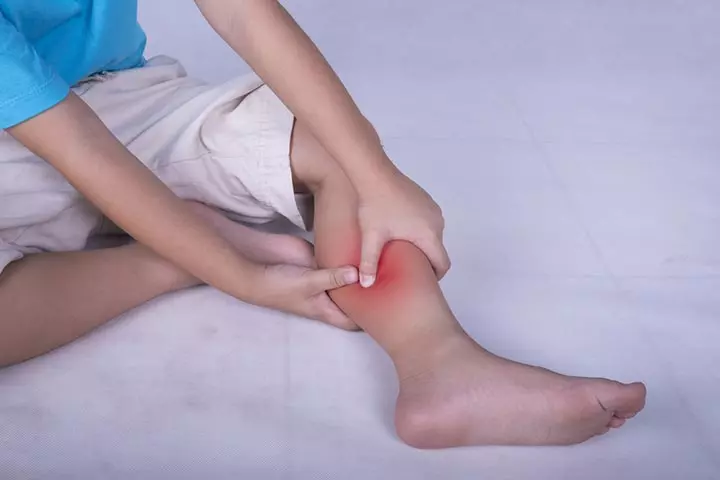
Image: Shutterstock
While limping itself is a symptom of an injury or medical condition, it could be difficult to determine it in young children. Here are some symptoms that can accompany the limping.
- Weakness or numbness in the legs or feet
- Pain in the hips
- Frequent falls
- Inability to sit for too long
- Complaints of pain in the back of the legs
- Inability to move the toes
- A lack of balance while walking
Once you have identified the symptoms, next, you need to understand why your child is limping.
Causes Of Limping In Children
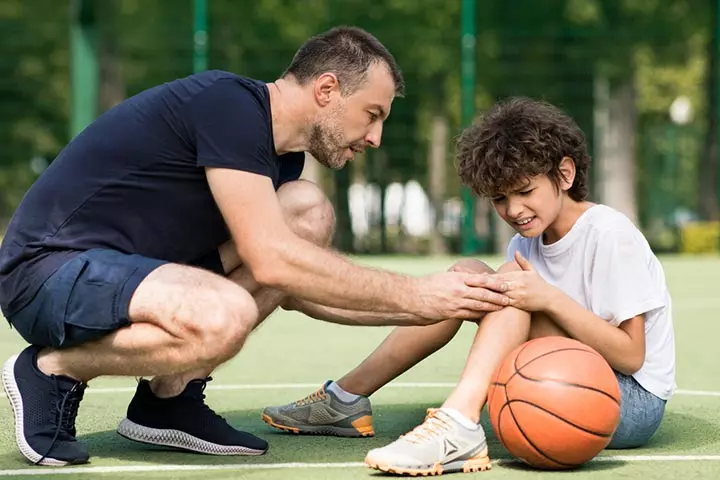
Image: Shutterstock
Limping causes in children may range from a simple physical injury to an underlying medical condition. Let us look at each one in detail.
1. Physical injury
This is a common cause of limping in children. If your child experienced physical trauma while playing and has started to limp, it could be due to gait deviations or a fracture or sprain in the hips, ankle, or legs. Your doctor will likely ask you the following questions to confirm if the limping is due to a fracture (1).
- Did the child get up immediately after falling?
- When did the limping start?
- Does your child feel comfortable while crawling?
- Did you see any external injuries?
2. Irritable hip
Also known as transient synovitis, irritable hip is a common condition that causes hip pain and limping in children. It generally occurs due to the inflammation of the lining that covers the hip joint. The symptoms include pain and limited motion of the hip, and the condition is self-limiting (2).
3. Infections
Infections of the bone can also cause limping in kids. One such infection is septic arthritis. The symptoms of septic arthritis are similar to that of irritable hips, so these two are often confused. Septic arthritis is characterized by a bacterial infection of the synovial joint and joint tissues. It mostly affects the hip and knee joints but could also affect the shoulder and ankle joints. Studies suggest that septic arthritis is mainly seen in children under the age of four.
Along with the limping, a child with septic arthritis would also have a fever, joint pain, joint swelling, reluctance to walk on the affected limb, warmth around the affected joint, loss of appetite, and episodes of vomiting (3). Another type of bone infection caused by bacteria is osteomyelitis, which is characterized by inflammation of bone. The condition can also cause limping in children (4).
 Quick fact
Quick fact4. Juvenile arthritis
This is a condition found in children under 16 years. According to the American College of Rheumatology, juvenile arthritis affects about one in every 1000 children. It is commonly characterized by the swelling of the joints and lymph nodes for up to six weeks. Although the exact causes are not known, autoimmune diseases in children are believed to be triggered by a combination of genetic factors, environmental factors, and a weak immune system.
Juvenile arthritis is also characterized by limping, especially in the morning, high fever, skin rash, and clumsiness (5).
A study evaluated the age of onset of juvenile arthritis in 1081 children. The graph below depicts the results of the study. According to the findings, arthritis incidence was highest in girls aged one and four years. However, during adolescence, there was an even distribution between the genders. The onset of childhood arthritis occurs most commonly between ages one and four. However, there is a lower incidence in the first year of life and a less pronounced gender bias in adolescence.

Juvenile idiopathic arthritis epidemiology by age and gender
Source: Biological classification of childhood arthritis: roadmap to a molecular nomenclature; Nature Reviews Rheumatology5. Legg-Calve-Perthes
Legg-Calve-Perthes (LCP) is a rare condition found in children aged five to seven years. It is characterized by painful limping and limited range of motion of the hip. It affects the femoral head, and the pain is often felt during physical activity. In some cases, the pain might radiate to the thigh and knee and cause knee pain in children (6).
LCP occurs when the blood supply to the femoral head is temporarily disrupted. The revascularization(restoration of blood flow) may occur over two to four years if the child is under 12 years old at the onset of the disease (7).
6. Slipped capital femoral epiphysis (SCFE)
This is a condition that affects the hips of a child. In SCFE, the thigh bone ball slips off the thigh bone’s neck. Children might get this condition after a sudden fall or an injury.
It is characterized by limping, pain that gets worse with activity, pain in the thigh, knee, and groins, and an outward-turned leg when they walk (8).
Other medical conditions that can result in limping are:
- Scoliosis, which is characterized by an abnormal curvature of the spine. This may cause the body to lean to one side, causing the child to limp.
- CongenitaliA condition or trait present at birth and present from the beginning of one's life and is often inherited genetically. disabilities of the hip, such as dislocated dysplasiaiAn unusual presence of abnormal cells in an organ or tissues. of the hip. These can occur before birth or develop later.
Discussing her daughter Marina’s diagnosis of developmental dysplasia of the hip (DDH), Débora M. H, a blogger and mom, says, “For me, my daughter was normal. I almost didn’t notice that she was limping. Marina started walking at one year, four months; two months later, a friend asked me about her hip: ‘something is wrong, you should see a doctor,’ she said.’ I took her to the doctor to make others sure she was healthy. ‘She has a problem with her hip and will need surgery,’ the doctor told me. “Fortunately, nothing went wrong: she used the body cast (from her hip until her feet) for one and a half months, then used braces along her legs for three months (at the end, just for sleep), made some sessions of physiotherapy and, now, the only medical prescription is to play a lot (i).”
- Cerebral palsyiA neurological disorder affecting a person's muscle control, thus affecting posture and balance. . It is a condition that affects the nerves, causing the child to limp (2).

Image: Shutterstock
- Acute leukemia. In rare cases, this could also be responsible for lower-limb pain and limping (9).
 Things to know
Things to knowDiagnosis Of Limping
Based on the additional symptoms, your doctor might order the following tests to understand the reason behind the limping.
Physical examination, X-rays, and ultrasounds may help in limping diagnosis and determine if there is a fracture or a sprain in the legs that might be causing the limping.
Two tests helping in limping evaluation, that might help your doctor determine the cause behind the limping include (1)
- Simulated prone internal rotation of the hip. In this test, the child is held chest-to-chest by the parent, and the hips are extended fully. This position gives an accurate measure of the hip’s internal rotation and can help determine synovitis, arthritis, and Perthes diseaseiA rare childhood disorder causing a loss of blood supply to the hip joint, leading to weak bones and increased chances of fractures. .
- Crawl test. If the child is limping but can crawl, the problem is limited to the leg and feet. Thus, pelvis osteomyelitis and hip and knee sepsis can be ruled out. However, if they find trouble crawling, it could likely be fracture of tibia foot or osteochondritisiA condition that arises from reduced blood flow, leading to the separation of a bone fragment from the surrounding region. .
Treatment For Limping In Children

Image: Shutterstock
Your doctor is the best person to evaluate the condition and suggest the best course of action.
If it is a minor injury or an ankle sprain, limping treatment may involve restricting the movement, cold compresses, and elevating the injured leg. In the case of slipped upper femoral epiphysis, the child may need surgery as soon as possible. Your doctor may prescribe crutches to reduce the weight on the injured leg.
Your doctor may also prescribe antibiotics for the treatment of infection. You can prevent certain causes such as injury and sprains by instructing your child to do regular stretching exercises before playing. You can also give them a nutritious diet so that their bones grow strong and healthy. In addition to conventional treatments, some parents also go for complementary therapies such as chiropractic care or acupuncture, which may help alleviate symptoms. However, it’s important to consult with a healthcare professional before starting any alternative treatments.
 Things to know
Things to knowFrequently Asked Questions
1. When should I worry about my child limping?
Limping in children is generally due to minor injuries and is not a cause for worry. However, you should see a doctor if the child experiences worsening symptoms or limping along with severe pain in the hip, thigh, or knee (10). The other scenarios when you must see a doctor are if the limping is accompanied by an inability to lift body weight on legs, changed shape of legs, or severe pain in the lower abdomen.
2. What should I do if my child is limping?
If your child is limping for minor reasons such as a splinter or blister, administer first aid treatment. You may also apply warm or cold compresses for 10 to 20 min. If your child complains of pain, give them a pain killer such as ibuprofen or acetaminophen.
However, if the pain continues along with fever, redness, and swelling, contact a doctor to know the possible cause (11).
3. Can a viral infection cause a child to limp?
Toxic synovitis or transient synovitis is one of the causes of limp and hip pain during early childhood. The exact cause of this condition is unknown, but it develops after a viral infection (12). Fortunately, toxic synovitis resolves on its own. Doctors may prescribe a nonsteroidal anti-inflammatory medication for relief (13).
Limping in children could be due to a minor physical injury, inflammation of the hip joints, or other infections. Minor injuries are common among children since they are physically active. If the limping is due to a minor sprain or fracture, the treatment usually includes rest and cold compresses to reduce the pain. But the prognosis of limb pain due to other conditions might depend on the extent of the infection. If you notice your child limping frequently or if the limping is accompanied by other symptoms, such as the inability to sit for long, hip aches, or inability to walk, consult your doctor.
Infographic: Reasons A Child Might Be Limping
If you have observed your child limping, there can be an underlying problem that may require prompt medical attention. Knowing the cause early can help manage and treat it effectively. The infographic below highlights the various reasons a child may limp.
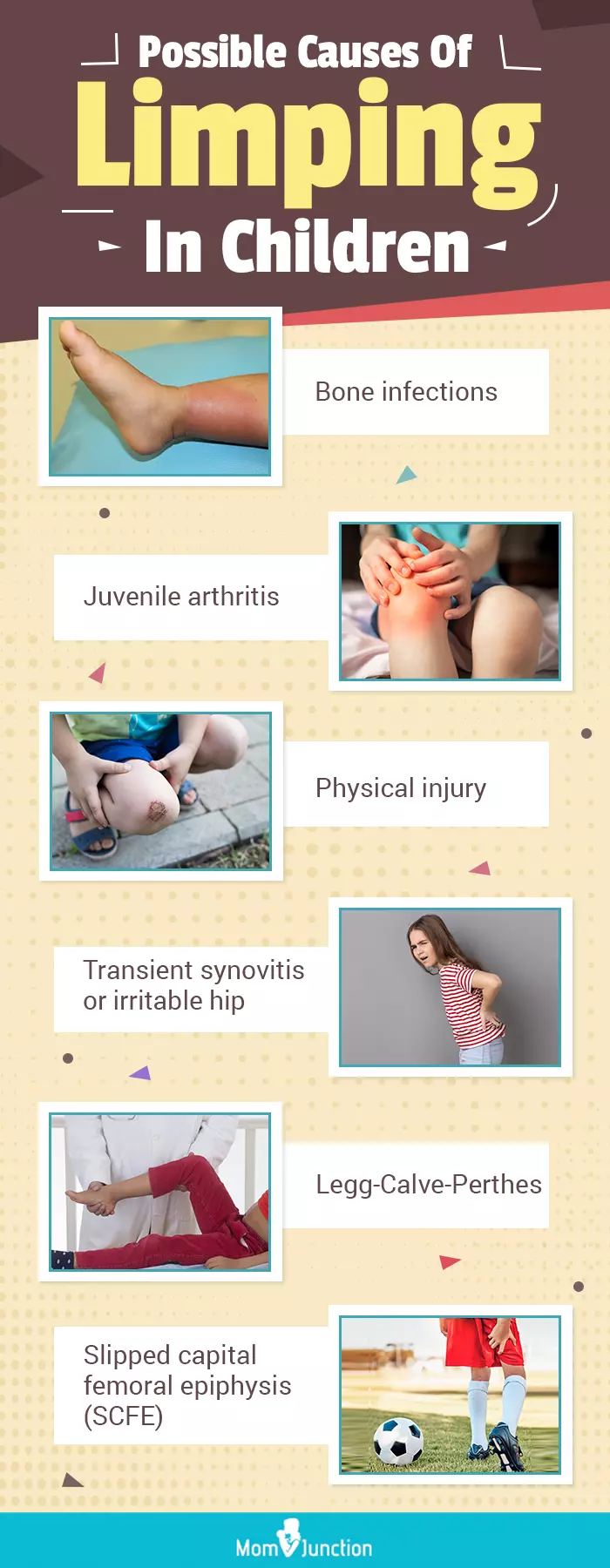
Illustration: Momjunction Design Team
Illustration: Causes Of Child Limping: Symptoms Diagnosis And Treatment

Image: Dall·E/MomJunction Design Team
This video gives an in-depth explanation regarding limping. Watch the video to gain some insights into the different types of limping.
Personal Experience: Source
MomJunction articles include first-hand experiences to provide you with better insights through real-life narratives. Here are the sources of personal accounts referenced in this article.
i. She looked like a perfect baby, but she had a hip problem. And that’s more common than you think.https://deboramh.medium.com/she-looked-like-a-perfect-baby-but-she-had-a-hip-problem-and-thats-more-common-than-you-think-71d9b03c17dd
References
- Jessica Burns and Scott Mubarak; Evaluation of the Limping Child; Rady Children’s Hospital.
https://www.jposna.org/index.php/jposna/article/download/109/87/ - Limping In Children; National Health Service (UK)
https://www.nhs.uk/conditions/limp-in-children/ - Septic Arthritis; St. Louis Children’s Hospital
https://www.stlouischildrens.org/conditions-treatments/septic-arthritis - Sindhur P.K et al.; Study of Osteomyelitis in pediatric patient; J PediatrRes (2017).
https://pediatrics.medresearch.in/index.php/ijpr/article/view/259/516 - Juvenile Arthritis; Symptoms & Causes; Boston Children’s Hospital
https://www.childrenshospital.org/conditions-and-treatments/conditions/j/juvenile-arthritis/symptoms-and-causes - Vito Pavone et al.; Aetiology of Legg-Calvé-Perthes disease: A systematic review; World Journal of Orthopedics (2019).
https://www.ncbi.nlm.nih.gov/pmc/articles/PMC6429000/ - Benjamin Joseph; Management of Perthes’ disease; Indian Journal of Orthopaedics (2015).
https://www.ncbi.nlm.nih.gov/pmc/articles/PMC4292319/ - Slipped Capital Femoral Epiphysis in Children; University of Rochester Medical Center
https://www.urmc.rochester.edu/encyclopedia/content.aspx?ContentTypeID=90&ContentID=P02782#:~:text=Slipped%20capital%20femoral%20epiphysis%20(SCFE - Y.Lefevre et al.; Pediatric leukemia revealed by a limping episode: A report of four cases; Orthopaedics & Traumatology: Surgery and Research (2009).
https://www.sciencedirect.com/science/article/pii/S1877056808000078 - Limping in children.
https://www.nhs.uk/conditions/limp-in-children/ - When Your Child Limps.
https://www.stlouischildrens.org/health-resources/pulse/when-your-child-limps - Toxic Synovitis.
https://kidshealth.org/en/parents/toxic-synovitis.html - What Causes a Child to Limp?
https://www.hss.edu/article_pediatrics-causes-child-to-limp.asp - Herniated Disc.
https://www.aans.org/conditions-and-treat/herniated-disc/
Community Experiences
Join the conversation and become a part of our nurturing community! Share your stories, experiences, and insights to connect with fellow parents.
Read full bio of Dr. Dur Afshar Agha
Read full bio of Dr Bisny T. Joseph
Read full bio of Dr. Ritika Shah
Read full bio of Shinta Liz Sunny








